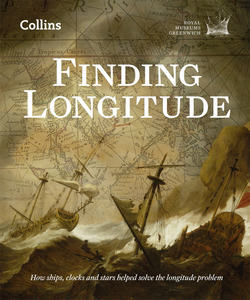Читать книгу Finding Longitude: How ships, clocks and stars helped solve the longitude problem - Rebekah Higgitt - Страница 4
FOREWORDS
ОглавлениеShips, Clocks & Stars: The Quest for Longitude
Director’s Foreword
Longitude is central to the stories of navigation and discovery told by the National Maritime Museum since it opened in 1937. It gained even greater importance to us in the 1950s, when we assumed responsibility for the Royal Observatory, itself founded expressly to help solve the ‘longitude problem’. It is most appropriate and a great pleasure, therefore, to be able to commemorate the tercentenary of the first Longitude Act of 1714 with an ambitious exhibition and this new book, both of which tell what is an extraordinary story for twenty-first century audiences.
The famous Harrison timekeepers are, naturally, central to it and have been a draw for visitors since coming to the Museum in time for its opening in 1937. In thinking about them in this tercentenary year, it has been fascinating to look afresh at the often fraught events that first brought them to Greenwich nearly 250 years ago, and at their broader context as part of the longitude story as a whole.
I would like to thank the authors for their efforts in researching and writing this book. Their work has been possible thanks to a major research project on the history of the Board of Longitude, run in collaboration with the Department of History and Philosophy of Science at the University of Cambridge and funded by the Arts and Humanities Research Council, to whom we are most grateful. I should also like to thank United Technologies, which has supported the exhibition so generously. Together, the book and exhibition present an extraordinary story of innovation, creativity and competition that changed how we understand our world.
DR KEVIN FEWSTER AM FRSA
ROYAL MUSEUMS GREENWICH
Sponsor Statement
Innovation is timeless. Yesterday’s ideas form the foundation for today’s inventions, which power tomorrow’s solutions. At United Technologies, we are proud of our long history of pioneering innovation to make modern life possible. We understand the relentless drive of those who sought to solve the longitude problem. It’s the same drive that pushes us to solve today’s global challenges. In this spirit of innovation, we are delighted to sponsor the exhibition Ships, Clocks & Stars: The Quest for Longitude. We hope you are inspired by this great story.
LOUIS R. CHÊNEVERT
CHAIRMAN & CEO,
UNITED TECHNOLOGIES CORPORATION
Ships, Clocks & Stars: The Quest for Longitude
Foreword
The Longitude Act of 1714 was an extraordinary event, an unprecedented moment when natural philosophers put a scientific problem on the political and national agenda. Their success was evident in the speed with which Parliament took up the call to action, and in the large rewards that the Act offered – sums that could be life-changing for the winners. More important, the potential rewards would incentivize energetic and ingenious efforts to meet the challenge, and the measurement of longitude was indeed the number-one technical challenge for a maritime nation.
The Act was also notable in creating a diverse group of experts, the Commissioners of Longitude, who brought together Britain’s naval, political, academic and scientific interests. The Commissioners constituted what was in effect the first ‘research council’, aimed at rewarding invention and innovation. And although it is best known for the long-delayed recognition of Harrison’s achievements, the Commission remained in existence for more than a century, rewarding other ingenious inventions and explorations.
The ex-officio members of the Commission included the Astronomer Royal, the President of the Royal Society, and a Cambridge professor. As the fifteenth Astronomer Royal, as well as a former holder of the other offices, I have special historic links with the Commission (‘Astronomer Royal’ is now, however, just an honorary title, without any formal link with Greenwich). I am therefore delighted that the 300th anniversary of the Longitude Act should be marked by a splendid exhibition at the National Maritime Museum. This fine book accompanies the exhibition. It tells the story of the search for practical ways of determining longitude while on a ship at sea, a quest that many considered to be as hopeless as the search for perpetual motion or eternal life. Yet the problem was effectively solved in the eighteenth century, largely by British artisans and philosophers.
This book takes a broad view of the subject, tracing the history from the attempts of the sixteenth and seventeenth centuries, some of which seemed genuinely promising, to the mid-nineteenth century, by which time new techniques for measuring longitude at sea had been embedded in naval routines. These advances helped create a better understanding of the world through improved charting, in which British surveyors and ships were a major force.
The story is also about problem-solving – the process of identifying a problem, exploring different options to overcome it, and then bringing workable solutions to a state where they can be used by all. Clock- and watchmakers including John Harrison, John Arnold and Thomas Earnshaw, and astronomers including Edmond Halley and Nevil Maskelyne, all feature prominently. But it is also a story that shows that the most difficult technical problems are not solved instantaneously: they usually require huge efforts over a long time to become a part of everyday life, often necessitating what we would now call ‘public/private partnership’ whereby the state offers support to inventors and entrepreneurs. Thanks to the priority given to the longitude challenge, London became a crucial centre for the development and discussion of ideas, instruments and techniques that would underpin major changes in seafaring, which was Britain’s lifeblood.
MARTIN REES, ASTRONOMER ROYAL
